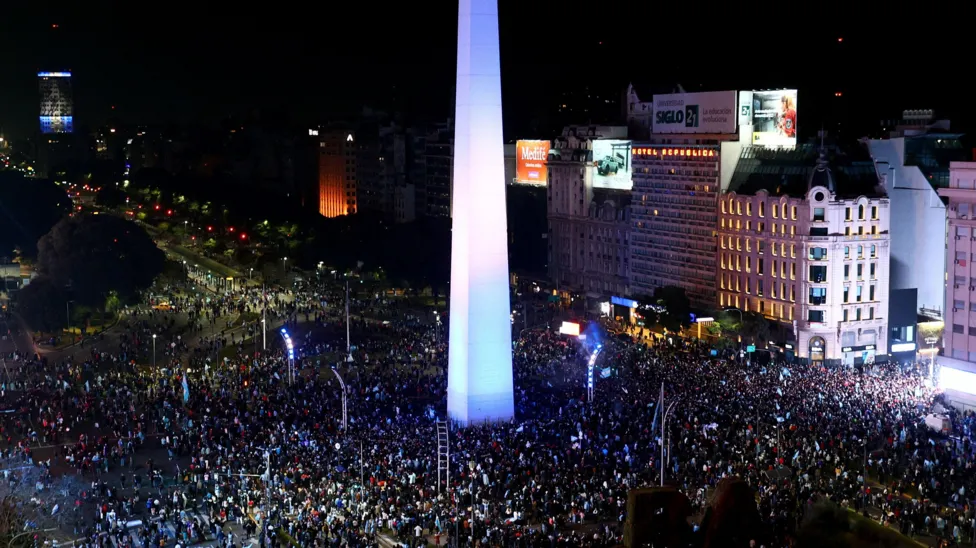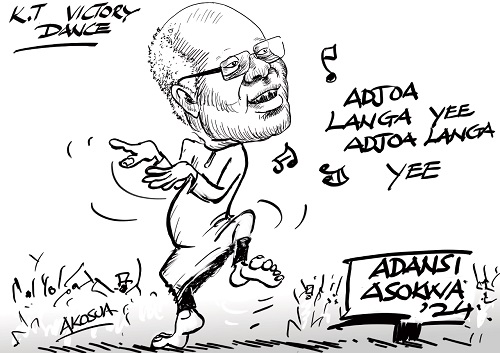
Argentina won the Copa America, but lost the respect of many with the manner of their celebration.
Midfielder Enzo Fernandez faces disciplinary proceedings at Chelsea after posting a video on social media that the French Football Federation said included alleged “racist and discriminatory language”.
Fifa is also investigating the video, in which several members of the Argentina squad – celebrating their 1-0 win over Colombia in the final – take part in a song originally sung by Argentina fans questioning the heritage of France’s black and mixed-race players.
The global repercussions of that song have sparked a reaction from the Argentine government.
Javier Milei’s right-wing administration has no natural sympathy for anything that might be considered ‘woke’.
But Julio Garro, the under-secretary for sports, suggested that team captain Lionel Messi and local FA president Claudio Tapia should issue an apology for the song that some were singing on the bus on Sunday night. “It’s left us looking bad,” he said.
Garro was sacked, external on Wednesday for his comments, while others have rejected the need for an apology.
With monotonous and depressing regularity, when teams from Argentina play opponents from Brazil in continental club competitions, there are scenes in the stands of Argentine fans making monkey gestures.
When interviewed, the perpetrators vehemently deny that they are racists. They are indulging in ‘banter’. All is fair, they argue, in love, war and football. Anything that goads and irritates the opposition is fair game. And on this latest matter, such sentiments are widespread.
The attempts from Argentine clubs to crack down on this behaviour have often been half-hearted, with references to ‘xenophobia’ – instead of calling it what it is: racism.
Especially depressing is the fact that this behaviour has been exhibited by some of the players. Here there is no excuse.
With the exception of one of the substitute goalkeepers, the entire squad is based in Europe.
These players are part of multi-national, multi-cultural, multi-racial squads. They should know much better. Quite apart from any possible sanctions, there could be some very awkward dressing-room moments when they report back for pre-season training.

Why do they do it?
One of the attractions of national team duty for these players is the chance to be together with people from their own culture, and sing their own songs.
It is a chance for them to be aggressively and assertively Argentine.
Many aspects of the country’s fan culture are wonderful. The songs can be hypnotic.
But the lyrics to this particular song, which grew out of the Qatar World Cup final, which Argentina won on penalties against France, are extremely disturbing.
The Argentine players risk not only insulting their black team-mates and fans. These songs insult their own heritage.
It is rare these days to see a black Argentine. But that has not always been the case.
Going back to the days of Spanish colonial rule, the country imported far fewer enslaved Africans than neighbouring Brazil, and put an end to slavery decades earlier. But around two hundred years ago, Buenos Aires was a third black.

What happened to this population?
There are many theories, ranging from outbreaks of yellow fever to deaths in the war for independence.
The most coherent idea, though, is simply that they were swamped by the millions of immigrants pouring in from Europe and the Middle East (especially Italy – Argentines speak Spanish with an Italian intonation) in the late 19th and early 20th centuries.
The African influence is there in the gene pool. Dark-skinned people are often nicknamed ‘el negro’ – which carries no negative connotation.
African influence has left its mark. Argentina’s most significant cultural product is tango. The word is African, and the music and dance, like so many genres of the Americas, are the consequence of the mix of African, European and indigenous styles.
Because of its socially lowly origins, tango was looked down upon by the Argentine elite, seen as a vulgar phenomenon – until it took Paris by storm in the early 20th century and was thus legitimised.
Incidentally, it is interesting that (just like samba in Brazil), tango in Argentina moved in the opposite direction from football. The musical genre began at the bottom of society and moved up, where football started with the elites and moved down.s Aires was a third black.
A friend of mine is a black Uruguayan sociologist.
You might expect him to have a good radar for these things, and he lived for years in Buenos Aires without experiencing the slightest problem.
On the other hand, the mere presence of so many European immigrants in the south cone of South America was an explicitly racist project.
At the time, there was a fashion for eugenic ideas – the belief that some ‘races’ were superior to others.
South American leaders sought to ‘improve’ and ‘civilise’ their countries through importing a white labour force.
The very presence, then, of so many European descendants in Argentina is the consequence of racist thinking.
The idea of a hierarchy of races has never entirely gone away, and has emerged in all its horror in the lyrics of the song with which some of the Argentina players stained their glory on Sunday.
—–
Explore the world of impactful news with CitiNewsroom on WhatsApp!
Click on the link to join the Citi Newsroom channel for curated, meaningful stories tailored just for YOU: https://whatsapp.com/channel/0029VaCYzPRAYlUPudDDe53x
No spam, just the stories that truly matter! #StayInformed #CitiNewsroom #CNRDigital
The post ‘Argentina song stained glory of Copa victory’ appeared first on Citinewsroom - Comprehensive News in Ghana.
Read Full Story



















Facebook
Twitter
Pinterest
Instagram
Google+
YouTube
LinkedIn
RSS